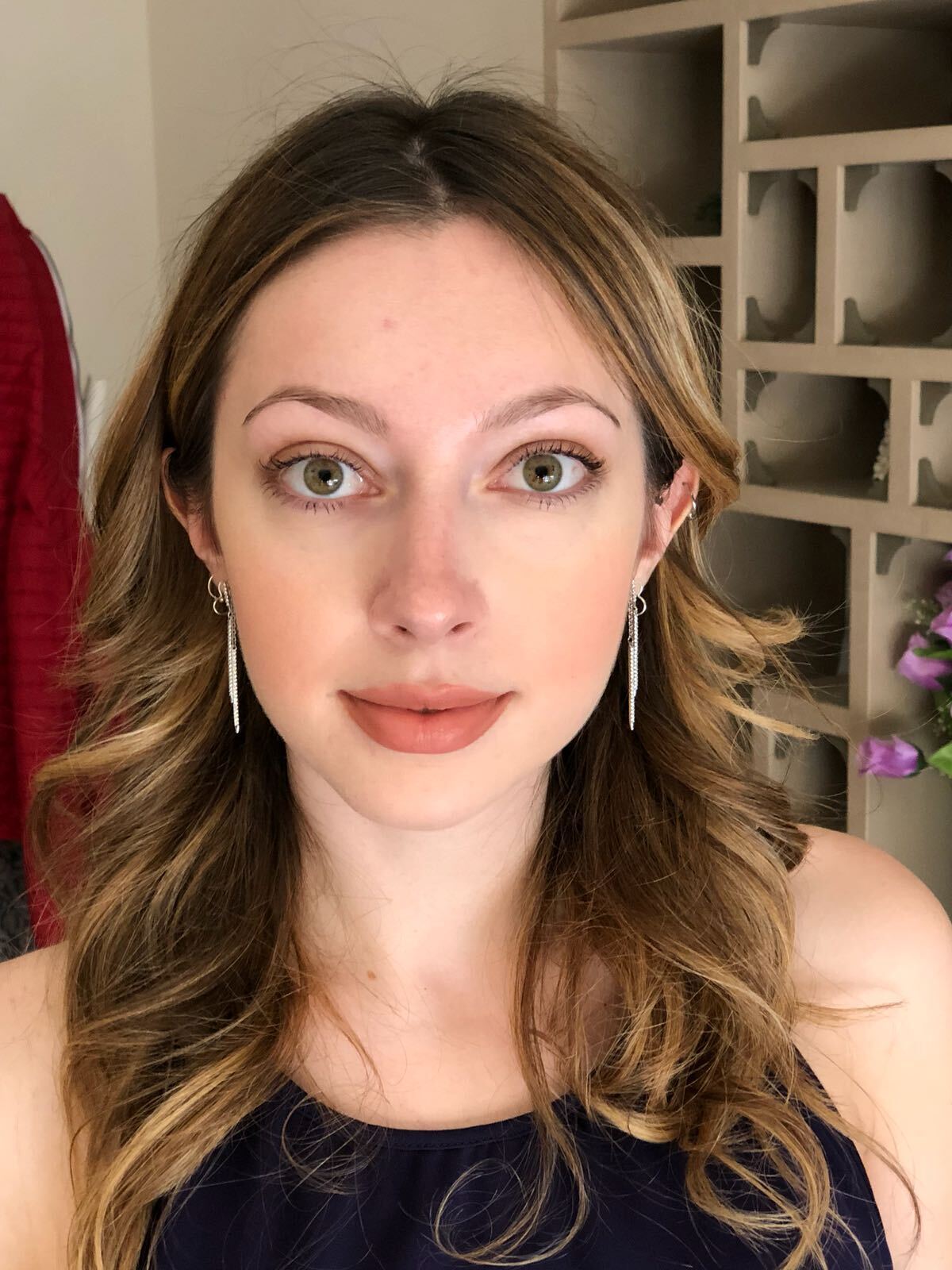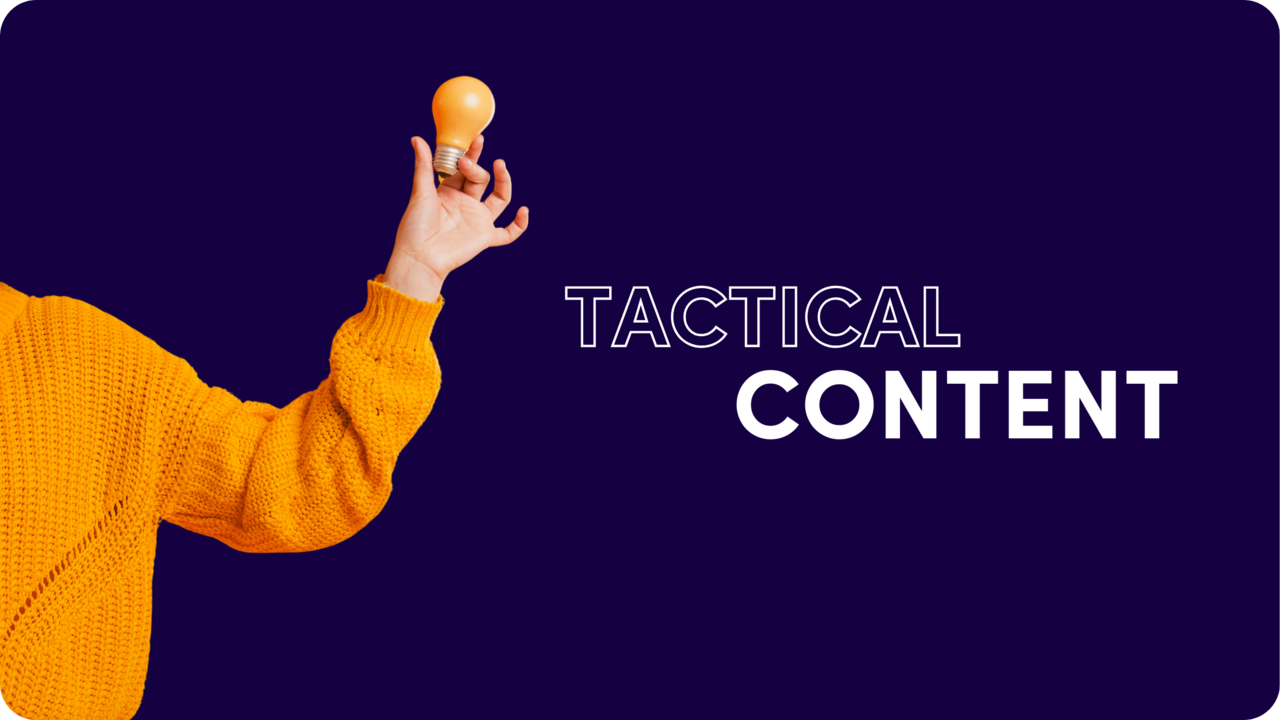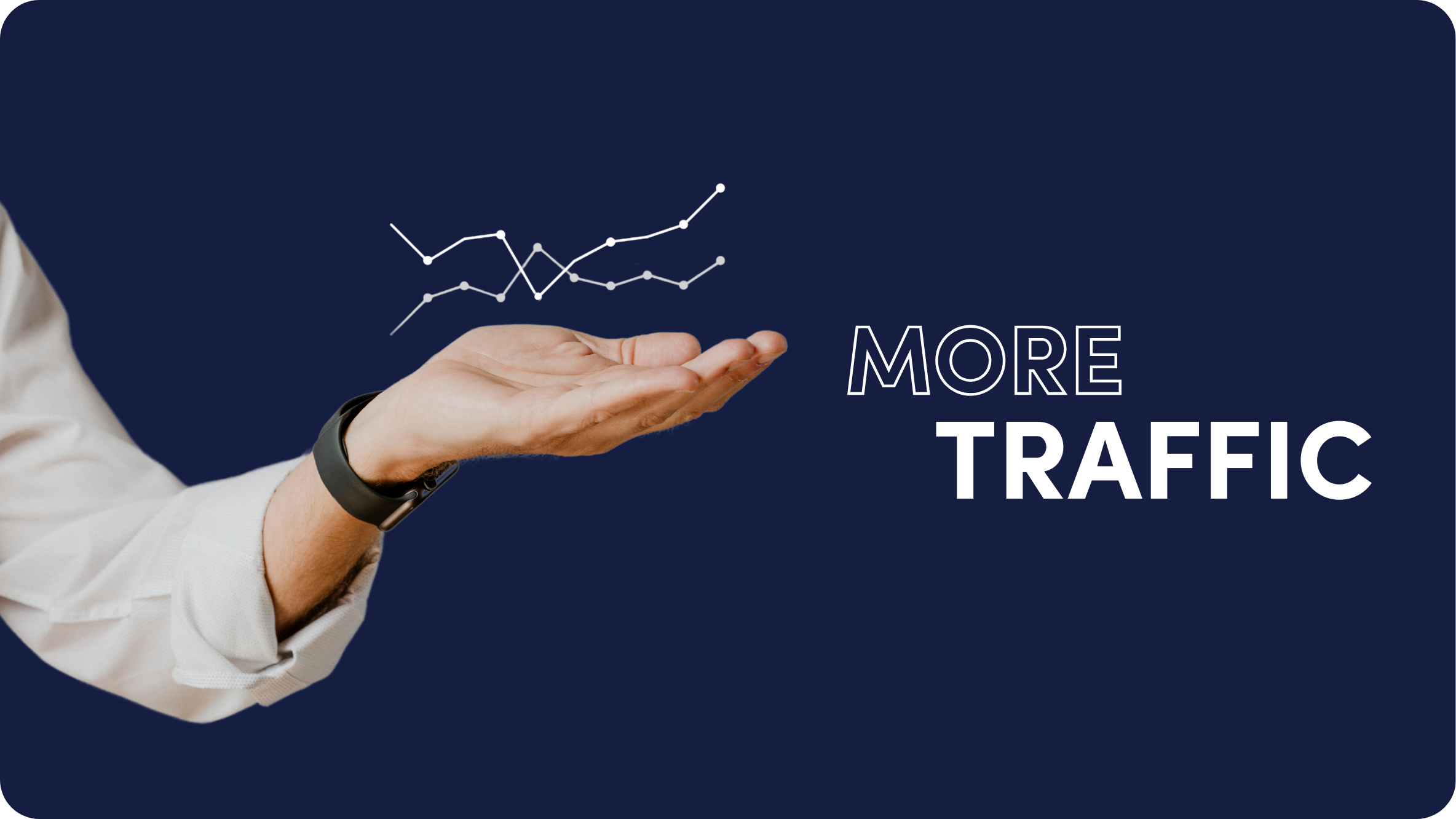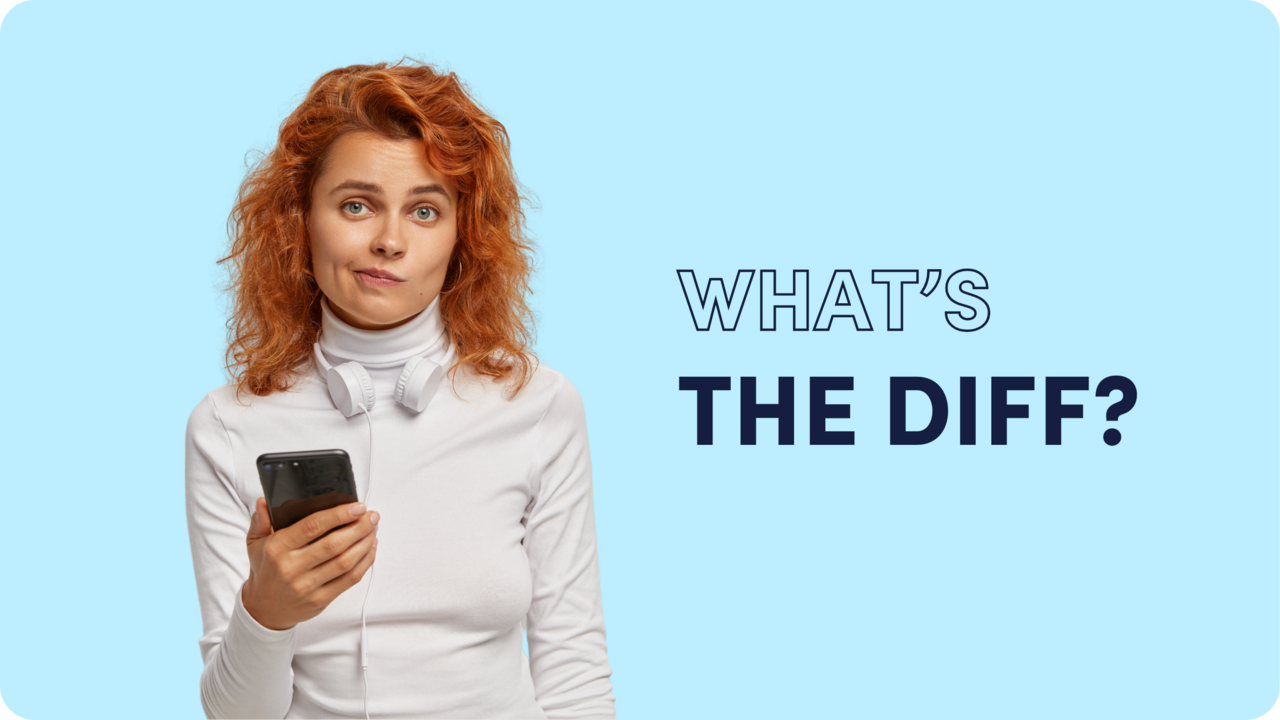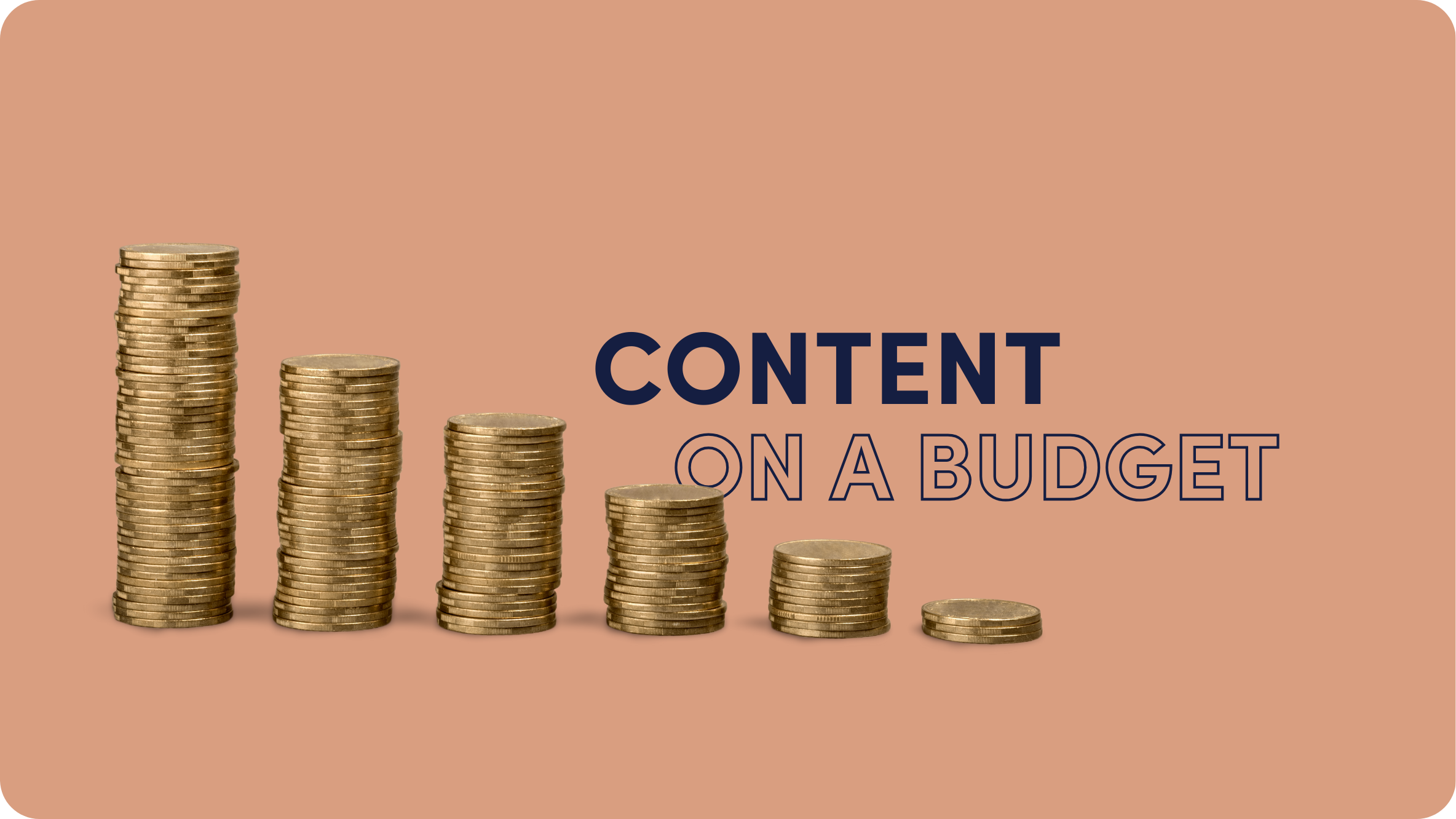[Guide] What a Full-Funnel Marketing Strategy Looks Like in 2024

Almost 96% of visitors who land on your website are not ready to commit to a purchase. But that doesn’t mean you can’t persuade them.
The process of building brand awareness among targeted audiences, capturing the contact information of potential customers, and persuading them to convert via ads, content, email, and more, are all part of what is known as the marketing funnel.
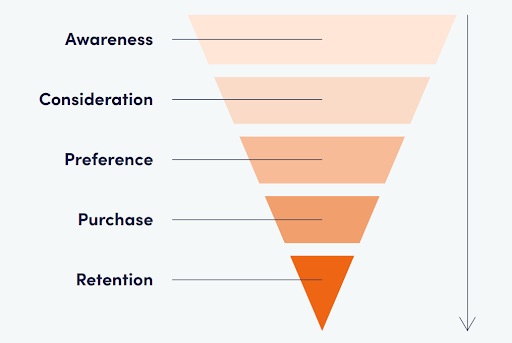
Simply put, the marketing funnel is a way to organize the typical customer journey. It identifies the different stages a potential customer generally goes through to become a paying customer.
These stages can also be grouped together according to their position in the funnel – ‘top’, ‘middle’, or ‘bottom’:
- Top of the funnel (Awareness): The early stages of awareness when the brand appeals to a large potential audience of people who may not have heard about it yet and may be interested.
- Middle of the funnel (Consideration/Preference): The potential audience is nurtured via content and interactions with the brand. They learn more about the product and begin to consider becoming a customer.
- Bottom of the funnel (Conversion/Purchase): This is the later stage of the funnel when the person is persuaded to convert and becomes a customer.
- Post-funnel stage (Retention/Advocacy): Now, the goal is to keep customers happy and satisfied so they continue as customers and even become ambassadors for the brand, recommending it to friends and associates.
Ok, so what is a full-funnel strategy?
A full-funnel marketing strategy is when all these stages are active and connected so the target audience enjoys a complete, unified, and consistent experience with the brand, throughout their journey from awareness to purchase and beyond.
If a brand has a really strong top-of-funnel strategy but fails to nurture potential customers through the mid-funnel, then the number of converted customers will remain low.
If the top-of-funnel strategy is weak, then it will be harder to generate a pool of potential customers in the mid-funnel with the potential to convert.
Having a full-funnel marketing strategy – one that is robust at every stage – leads to higher brand recognition, more leads, more conversions, and higher average customer value. Therefore it is imperative that companies not only optimize their funnel at all stages but make sure that all the stages connect and work together to maximize the full potential of the funnel.
Let’s go step by step through the top, middle, bottom, and post-funnel stages, and explore what a full-funnel strategy really looks like.
Top of Funnel: Cast a wide net to attract potential customers
The top of the funnel (TOFU) is where potential customers start to become aware of your company or product. They may not have heard of your company before, or they may have only a slight awareness of your offering. At this stage, brand awareness and recognition are generally low.
Marketing messages communicated at the TOFU stage should focus on the pain points and needs of the target audience, rather than on your business. It’s not yet time to talk about specific products or solutions. Don’t focus on your brand or product; rather, talk about what the customer is going through or a related topic that is relevant or insightful to them. In this way, you can build trust and value in the eyes of the target audience, setting the stage to nurture them further along the funnel.
TOFU example
Take a look at this native ad by Mansion Global, the luxury real estate news and listing website. The ad directs the reader to an article about kitchen design, featuring an interview with a renowned New York architect. Note that the ad is not trying to sell a mansion. Rather, it is trying to attract relevant audiences and drive them to the site, where they can sign up for the newsletter, browse listings of prestigious real estate, and perhaps one day even purchase a mansion.

TOFU tactics
For top-of-the-funnel marketing, it is vital to cast a wide net to reach a broad audience. By capturing the attention of large audiences, you will gather a substantial pool of potential customers to filter through the funnel. TOFU tactics cover a wide range of digital channels and methods, including:
- Search engine optimization (SEO): Improve website visibility on search engines and target potential customers via popular search keywords in your niche.
- Social media marketing: Build a presence on popular social media platforms where the audience spends their time.
- Content marketing: Resonate with your target audience by providing valuable information or entertainment, including videos and interactive content (ie. quizzes and polls).
- Influencer marketing: Partner with influencers whose audience is suitable to your brand.
- Native advertising: Capture the attention of relevant audiences on the open web, outside of the ‘walled gardens’, with the purpose of driving them to your landing page or website.
TOFU metrics
The marketing metrics commonly used in top-of-funnel activities and campaigns include:
- Impressions: the cost per 1000 impressions of your ad shown to audiences
- Traffic: how much traffic is arriving from a particular ad or link to your website or landing page
- Click-through rates (CTR): how many clicks your ad or link is getting compared to the number of impressions served
Measuring the performance of TOFU campaigns will help you understand what’s working and what’s not, so you can adjust your strategy, generate more awareness, and drive more potential customers to the mid-funnel part of your customer journey.
Middle of the Funnel: Nurturing customers with tailored tactics
When potential customers reach the mid-funnel, they are more actively considering their options about how to solve a particular pain point or have their needs met. In an effective full-funnel strategy, marketing efforts should now nurture and guide the audience toward their final decision.
How? By providing valuable, insightful content and meaningful interactions that entertain, educate, or engage the target audience while helping them solve their pain points or fulfil their needs.
MOFU example
Smartling is a popular translation tool used by businesses to automate multi-lingual websites, marketing campaigns, and user experiences. As a B2B company, Smartling offers educational and informative events and content about technologies and trends in the translation arena. An upcoming webinar was promoted on LinkedIn, targeting relevant audiences who may be interested in learning more about machine translation and getting to know Smartling’s offer. By positioning itself as an expert in the field with free webinars and content, Smartling is building brand authority and relationships with its audience, which is crucial to nurturing potential customers through the middle of the funnel.
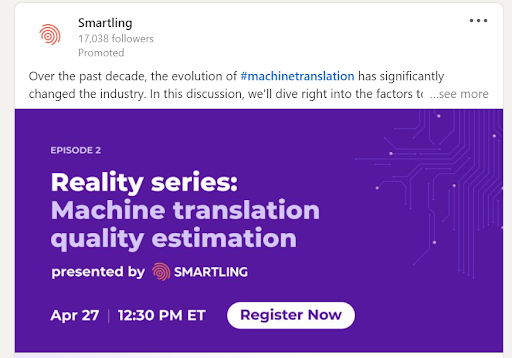
MOFU tactics
Common MOFU tactics that engage, educate, or entertain potential customers typically include:
- Ebooks/how-to-guides: Explore topics of interest to your audience and showcase your company’s position as an authority who can help.
- Email marketing campaigns: Share relevant and informative content and encourage recipients to take the next step in the buying process.
- Webinars: Educate potential customers on topics related to your products or services and demonstrate industry expertise.
- Testimonials/reviews: This is a particularly popular and effective tactic in B2C and e-commerce, often with influencer collaborations.
Action-driving content is key at this stage and incorporating compelling offers and CTAs is crucial at the middle of the funnel. These should nurture potential customers, striving to actively move them through the funnel to the next step in the buying process.
CTAs should be tailored to the target audience’s needs and interests and provide clear and tangible benefits. Personalized calls to action have been shown to convert 202% more leads than untargeted CTAs, so they need to be clear, specific, and action-oriented.
MOFU metrics
For middle-of-the-funnel campaigns, metrics are more focused than the TOFU stage. Instead of measuring broad outcomes, such as traffic and impressions, MOFU metrics include:
- Cost-per-Lead: Evaluate how much it costs to get the contact information of potential customers or drive another type of conversion.
- Lead quality: Assess the quality of leads so you can nurture them with appropriate content and experiences.
- Engagement rates: Understand how and when the audience is engaged and interested in your ads or campaigns so you can optimize toward their preferences.
Evaluating the effectiveness of MOFU marketing helps companies to make data-driven decisions and optimize the strategies that are providing the best results.
Bottom of the Funnel: Effective conversion tactics to boost acquisition
By the time a lead enters the bottom funnel (BOFU) stage, they are already familiar with the brand or product and have already engaged with the company in some way. Perhaps they signed up for a newsletter, downloaded an ebook, or attended a webinar.
At this final stage, it’s all about converting leads into paying customers by offering an easy and enticing purchase or conversion experience. This is the time for strategies that encourage customers to take action and close the deal.
BOFU example
In a BOFU email campaign, Amazon Business in the UK offered a promo discount to entice potential customers to sign up for an account. By including the words “Last Chance” in the subject line, the email creates a sense of urgency. Combined with the purchase discount offer, this is a powerful example of bottom-funnel marketing in the B2B world.
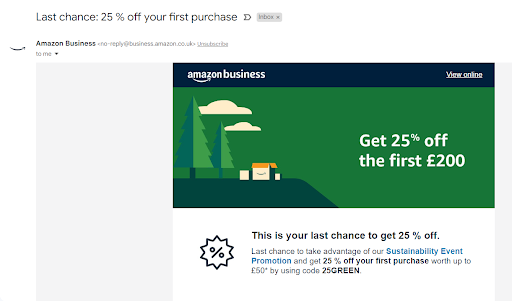
BOFU tactics
Popular tactics used in the bottom-of-funnel stage are specifically designed to drive conversions. These include:
- Retargeting: Target users who have previously interacted with your brand or have not completed a sale to encourage them to complete a purchase.
- Email marketing: Provide personalized offers and incentives to encourage potential customers to buy.
- Live demos/consultations: Especially in the B2B world, meeting with customers online or face-to-face is often crucial to closing the deal.
In the bottom-of-funnel stage, it is crucial to optimize the conversion process, making it as easy as possible for the customer to follow through. Purchasing and payment should be straightforward and intuitive, with clear and concise instructions at each step to remove friction. For some companies, offering support via phone or live chat is necessary to address any concerns or issues promptly and create a positive customer experience (CX).
BOFU metrics
Metrics for bottom-of-funnel marketing closely measure the cost of conversions, not just for the actual purchase but for the projected duration of the customer’s relationship with the brand. BOFU marketing metrics include:
- Conversion rates: How many people are converting compared to the number of people who visit a website or other digital asset.
- Customer acquisition cost: How much it costs to acquire a new customer. The lower the amount, the better!
- Customer lifetime value (CLV): The value of the revenue generated by a customer across their lifetime as a customer.
Post Funnel: Retaining customers with post-sale marketing
Every marketer already knows: it is cheaper to retain an existing customer than to acquire a new one. Meaning, it is vital to put effort into post-funnel retention strategies, so you can keep customers coming back and maximize your revenue.
Post-sale marketing builds customer loyalty, generates repeat business, and creates positive word-of-mouth referrals. It is a chance to show customers that you care about their experience even after the purchase has been made.
Post-funnel example
If you’ve ever had the pleasure of reading Stacked Marketer newsletter, you’ll know that you’re dealing with marketing pros. Subscribers receive the very latest news and hottest takes on marketing via a daily email newsletter. Stacked Marketer engages in post-funnel marketing with their referral program, which is regularly promoted in the newsletter. It’s simple, yet effective: current subscribers can access exclusive content and merchandise by referring new subscribers.

Post-funnel tactics
Effective post-sale marketing is an opportunity to be creative and get personal with customers, offering them exclusive deals and promotions. Here are some popular post-funnel tactics:
- Personalized offers and incentives: Tailor rewards to individual customers’ preferences and behaviors to encourage loyalty and repeat business.
- Referral programs: Incentivize customers to refer their friends and family, not only retaining the existing customer but also acquiring new ones through the referral.
- Loyalty clubs: Offer exclusive members-only rewards and benefits, encouraging continued purchases and customer loyalty.
- Customer satisfaction surveys: Identify areas for improvement and address customer concerns, thereby increasing customer satisfaction and loyalty.
- Exclusive promotions and events: Offer unique experiences and discounts to loyal customers, fostering a sense of appreciation and strengthening their relationship with the brand.
Post-funnel metrics
Measuring success at the post-sale stage is performed with metrics such as:
- Customer retention rates: The percentage of customers retained over a specific period, indicating the success of post-funnel activities.
- Monitoring customer satisfaction via qualitative feedback and polls: Reach out to existing customers to find out what they think and feel about your company. Aggregate the information to gain insights.
- Net Promoter scores: Measure customer satisfaction and loyalty by asking customers how likely they are to recommend the product or service to others.
The Key to Full-Funnel Marketing: Minimize Friction
A funnel that nurtures and guides customers from awareness to loyalty must be smooth and intuitive from the customer’s perspective. This means removing any possible impediments or friction along the way. Consistent monitoring and adjustment of the funnel are needed to maintain optimum performance. Events like economic changes, seasonal fluctuations, and marketing shifts must be addressed to ensure a maximum return on investment (ROI).
Some businesses benefit from investing heavily in top-of-the-funnel tactics such as SEO or native campaigns to attract potential customers. Others may benefit most from removing friction at the bottom of the funnel using strategies like email marketing or referral programs to convert leads into paying customers. The success of a full-funnel strategy depends on a myriad of dynamic factors and is constantly changing. Always keep your finger on every stage of the funnel – separately and together – so your target audience can enjoy a seamless, smooth, and enjoyable experience of discovering your brand and becoming a customer.
TL;DR: What a Full-Funnel Strategy Means for You
A full-funnel marketing strategy is essential for your business to attract, retain, and grow its customer base, across channels and experiences.
- Top-of-the-funnel (TOFU) tactics such as SEO, social media, content marketing, native ads, and influencer marketing can help create awareness and attract customer attention.
- Middle-of-the-funnel (MOFU) employs lead generation tactics such as ebooks, email marketing, webinars, and free trials to convert leads into paying customers.
- Bottom-of-the-funnel (BOFU) focuses on activities like retargeting, incentivization, and email marketing to close sales and encourage repeat business.
- Post-sale marketing, such as loyalty clubs, exclusive offers, and personalized communications, is crucial for building customer loyalty and encouraging repeat business and advocacy.
A full-funnel marketing strategy is one that ties these stages together, with minimal friction and maximum relevance and value to the audience. That is the key to customer acquisition, retention, and growth.
